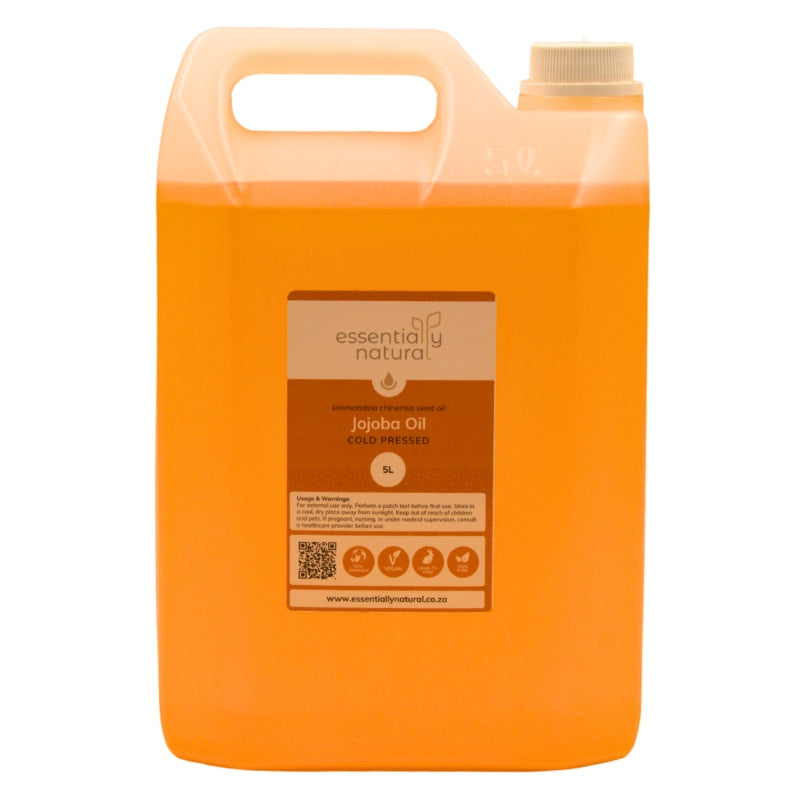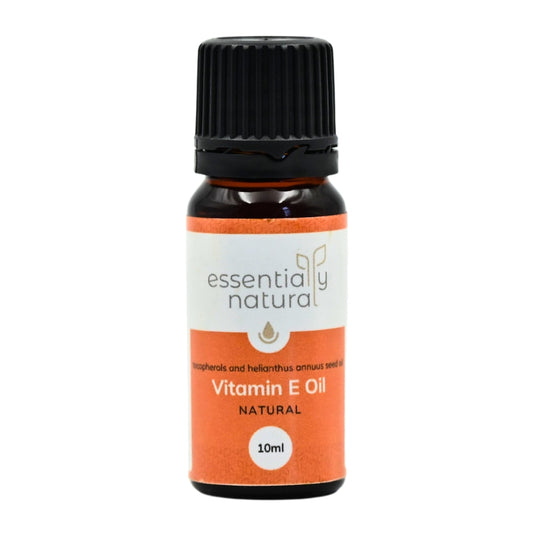
Oilology: Jojoba Butter and Oil
Aiden van WykJojoba (pronounced "ho-HO-ba") is one of the most popular oils on the market - and for good reason. Its versatility, affordability and the fact that it's non-allergenic makes it universally adored in skincare.
What is Jojoba Oil
Jojoba Oil isn't actually an oil-it's a liquid wax, and often considered superior because it is molecularly almost identical to human sebum - and when applied acts identically to how sebum would on the skin. This is excellent for skin balance because after cleansing (with a face wash or just a normal body shower), our skin feels stripped, triggering excessive oil production. However, since jojoba so closely resembles our natural oils, it helps regulate this process, minimizing rebound oiliness while being readily absorbed and non-comedogenic, making it prefect for acne-prone skin.
Additionally, jojoba's chemical structure is highly stable. Its symmetrical molecular chains are spaced further apart and contain low levels of triglycerides. This makes jojoba less reactive, highly resistant to oxidation, and more effective at shielding the skin from free radical damage (similar to Vitamin E).
Where does Jojoba come from?
Jojoba originates from North America, where Native Americans (known for their glorious hair) have long recognized its valuable properties. In the early 18th century, Spanish Missionaries observed them grinding jojoba seeds with a mortar and pestle to create a rich, Jojoba Butter-like paste. These missionaries were also responsible for transcribing the name using Spanish phonetics, which is why we pronounce Jojoba with a Spanish-derived "ho-HO-ba" sound today - similar to the pronunciation of jalapeño.
This salve was used for healing and protection, applied to:
- Wounds
- Burns
- Hair
- Animal Hides
- Dry Skin
Additionally, women ate jojoba seeds, believing they supported childbirth, while men chewed them during hunts to stave off hunger.
In the modern world, jojoba is cultivated globally due to its remarkable properties. Since it naturally thrives in dry climates, these conditions are easily replicated in various regions- with our Jojoba Oil proudly being South African grown :) But with that being said, all Jojoba Seeds can be traced back to North America.
Can Jojoba reduce acne?
It's complicated. You see, Jojoba can be a great addition to your routine if you have acne-prone skin-not because it directly treats acne, but because it helps balance your skin's natural oil production without causing excess greasiness. Since acne-prone skin struggles with clogged pores, maintaining this balance can be essential.
While jojoba doesn't actively fight acne like salicylic acid or azelaic acid, it can still support clearer skin by providing lightweight hydration. It helps replenish moisture that may be stripped away by acne treatments, all without clogging pores or triggering further breakouts.
When to use Jojoba Butter instead of Oil?
Jojoba Butter is just a Hydrogenated version of Jojoba Oil - making their properties almost identical. But in some cases, having an oil in butter form is not only more practical but also better at locking in moisture. Since both jojoba oil and jojoba butter share the same skin-compatible properties, they are easily absorbed. However, in its butter form, jojoba provides a richer, more occlusive layer-similar to how shea butter offers deeper nourishment for hair compared to a liquid carrier oil.
Aren't Hydrogenated oils unhealthy? Is Jojoba Butter... toxic?
Hydrogenated oils are widely recognised - and proven - to have negative health effects, particularly due to their prevalence in highly processed foods. But Jojoba is different:
- Unlike typical plant oils, Jojoba is a liquid wax, and simply turns it into a solid butter-like consistency without degrading into anything harmful.
- Jojoba is completely hydrogenated to turn it into Jojoba Butter. This means that no harmful trans fats are produced. Unlike partially hydrogenated oils in food, this process results in a stable saturated wax ester.
- The manner in which we use Jojoba is different. We use it cosmetically, so dietary concerns don’t apply. Plus, it remains biodegradable, non-toxic, and safe for skin.
The key benefit of hydrogenation in this case is that it enhances Jojoba’s resistance to oxidation and rancidity, making it an even better emollient.
So if you have concerns about hydrogenation, they’re absolutely valid—but in the case of Jojoba Butter, there’s no need to worry :)
How does Jojoba Butter compare to other Butters?
Jojoba Butter is a softer butter - like Mango - and feels lightweight on the skin. Unlike heavier butters - like Coco or perhaps even Shea - it absorbs quickly and leaves a non-greasy finish, making it a versatile ingredient in a variety of skincare formulations - perfect for creating non-greasy body butters, or rich but easily absorbed creams. This lightness also makes it excellent for hair care, allowing you to create deeply nourishing products that don't weigh your hair down.
Formulating with Jojoba
Jojobas Scent
Occasionally Jojoba Oil can have a very slight nutty scent, but in the vast majority of cases Jojoba has a very mild, neutral scent, making it an ideal base for fragrance blends or essential oil infusions.
Jojobas Solubility
Jojoba is an oil-based ingredient and is therefore oil-soluble.
If you want to combine it with water or water-based actives, you'll need an emulsifier such as Eco E Wax, Emulsifier HP 30 or even Soy Lecithin.
Jojoba Usage Rate
Jojoba can be used at 100% for a simple oil, balm or butter, but it's often blended with other ingredients in formulations. The usage rate can vary widely, from as little as 3% in emulsions to up to 50% in richer serums and butters, depending on your desired texture and skin feel.
Jojoba plays well with
Jojoba blends seamlessly with most oils and butters. It pairs particularly well with:
- Lighter oils like squalane, rosehip and camellia for a fast-absorbing formulation.
- Vitamin E for enhanced antioxidant protection.
- Emulsifiers for creating rich yet non-greasy creams.
How to work with Jojoba Butter
Jojoba butter is already soft and easy to work with, so melting is often unnecessary unless you need to fully incorporate other solid ingredients. If melting is required, gently heat it until liquefied, mix in your chosen oils, then allow it to cool and whip if a fluffy texture is preferred.
For emulsions, jojoba butter should be added to the heated oil phase along with the emulsifier and any other butters or oils in the formula. Jojoba is able to withstand heat without any loss in its properties.
What kind of products to add Jojoba to
Jojoba works well in:
- Body butters, scrubs, balms, and lip care products.
- Lightweight facial moisturisers and eye creams.
- Hair conditioners and leave-in treatments.
Thanks to its lightweight nature and skin-compatible composition, jojoba works well in products where hydration and quick absorption are key.































